Deep good text | Coffee intrusion! Read an article to understand China's "coffee" ecology
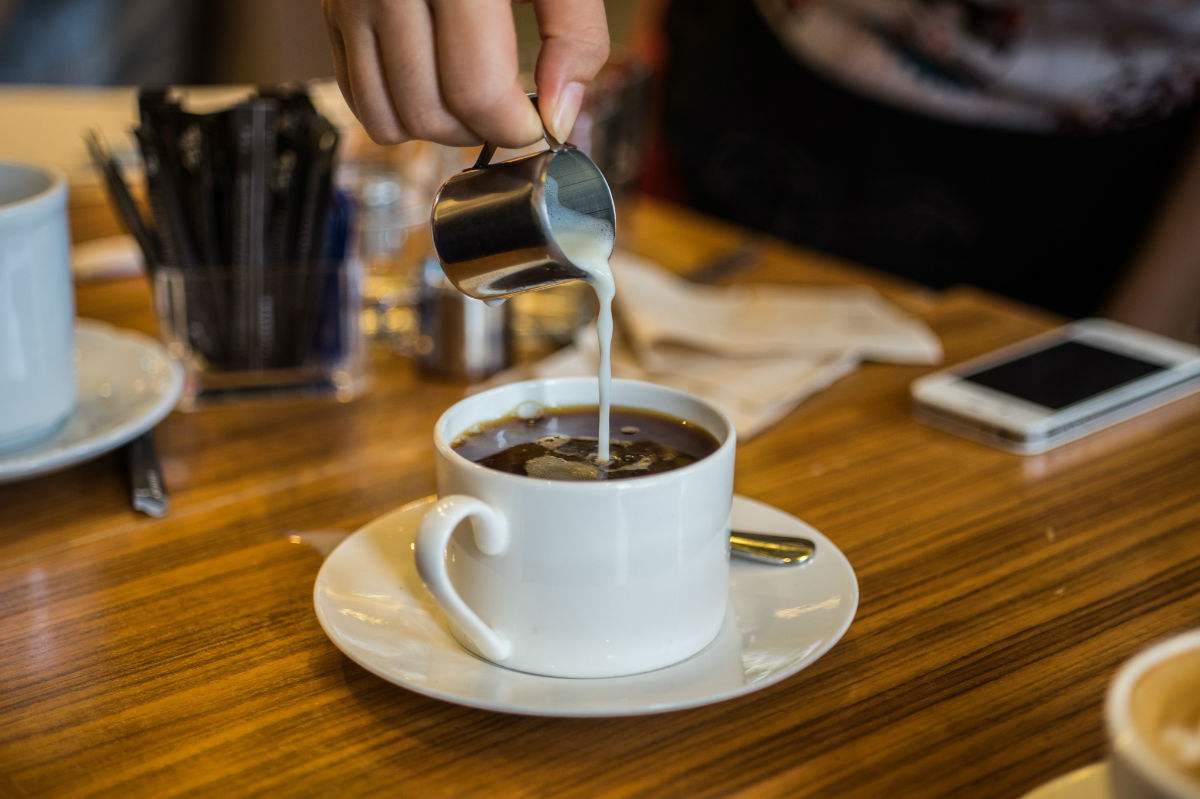
With the entry of Starbucks and other international brands, the Chinese coffee market is showing a lively scene, at the same time, the Chinese coffee consumer group is also growing. In recent years, with their accurate market positioning and unique business model, some emerging coffee brands have gradually broken the monopoly position of established enterprises such as Starbucks and Shangdao Coffee to the market, thus driving the whole coffee market to develop in a more diversified direction. At present, what is the development status, pattern and trend of China's coffee market? this paper gives the answers one by one.
China has been drinking tea and coffee as an imported product since ancient times, and it really came to the fore in 1997, when the carving time opened its first shop on Chengfu Street between the east gate of Peking University and the west gate of Tsinghua University. The location of the shop says it all: at that time, people's concept of coffee shop was still chaotic: China did not have a coffee culture, but only a "coffee shop culture", so everything about coffee was concrete. China's coffee business model is a relatively pure experience economy. In other words, it is not just the coffee itself, it is the matte signboard of carving time, it is the green umbrella at the door of Starbucks, the bear and wooden seat in the coffee.
Starbucks: the Eternal background of Chinese Coffee Industry
In 1999, Starbucks opened its first store on the mainland in Beijing ITC. What did Starbucks' marketing and rapid expansion bring to China's coffee industry? For a long time, the two nouns coffee and Weibo can be equated directly. If someone has to make a pretentious distinction, it feels like saying that Sina Weibo and Starbucks are not the same thing.
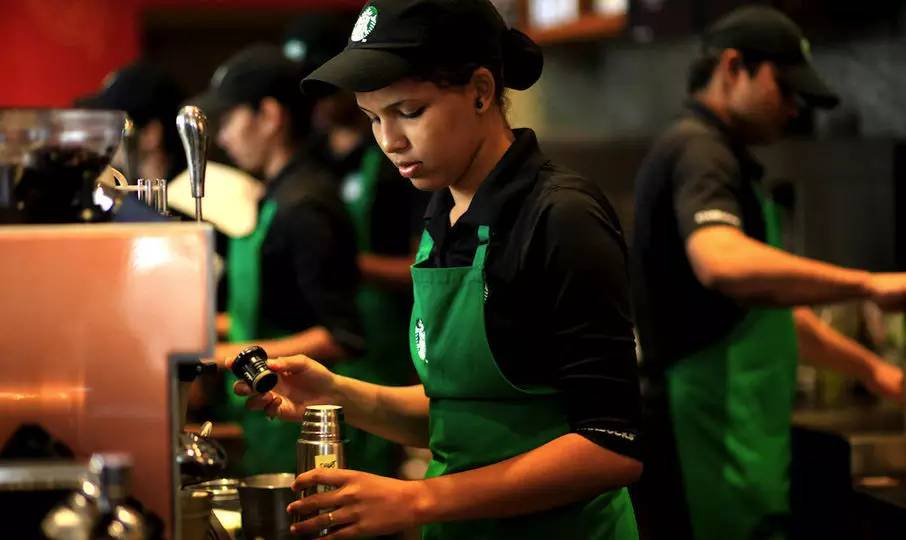
What other impact does Starbucks have? it is that the coffee shop has to have a little bit of styling. You don't have a floor-to-ceiling window, a small green umbrella, the interior is not a streamer, and the mini-bar is embarrassed to call yourself a coffee shop. In Europe and the United States, drinking coffee is a habit. No matter how inconspicuous the door is, there are still five or six groups of coffee drinkers standing at the door. Starbucks starts at a high price, so in China at that time, young people spent more than 30 years to buy a cup of coffee, do not sit in it for a while to think about life, distressed can hurt for a day. So Starbucks has set a threshold for the image of the coffee shop, and you can look better than it, but if it were more austere, business might be bleak. In addition, people are not so serious about the price of coffee. Starbucks put the price benchmark there with big international brands, and the brand premium is very high. This is a little good for the development of China's coffee industry: diners find that the coffee industry is a good way to make money, a cup of coffee with some snacks, the guest list is easily broken, the operation process is simple, and the cost is easier to control than other forms of catering industry. gradually, in the streets, coffee shops began to emerge like bamboo shoots after a spring rain, including some larger Korean coffee brands.
To sum up, China's coffee industry is in an ignorant state of being pushed and shoved by European and American brands such as Starbucks and Costa, and seduced by Korean coffee brands such as diffuse coffee and coffee to accompany you to develop step by step. The characteristics of Chinese coffee consumption are becoming more and more obvious: the pursuit of the brand is greater than the taste; the environment is more concerned than the price; the leisure purpose of people going to the coffee shop is more than the hard demand for coffee itself.
Trend: Starbucks competes for coffee
On the one hand, the rise of Chinese coffee industry is suspected of being forced by European and American brands, on the other hand, it has its inevitable rationality. First of all, as the first of the three major drinks in the world, coffee sells about 300 cups per capita in Japan and South Korea every year, while the world average is about 240 cups. After more than ten years of development, China's coffee industry has only 5 cups per capita, and there is still a broad space for development in the future. Statistics in 2013 show that there are 13600 cafes across the country, with a market growth rate of 15% and 20%. It is estimated that the coffee market share will reach 50.1 billion yuan by 2015.
At present, there are four main types of coffee market segments in China: business-style coffee shops led by Starbucks, Costa and Pacific Coffee; leisure-style coffee shops represented by diffuse coffee and coffee accompany you; simple-meal coffee shops represented by the above Island Coffee and Coffee Wing, and recently gradually emerging "specialty coffee" that goes deep into various single fields.
In fact, Shangdao Cafe focuses on simple meals, and coffee is only a tool to help it locate the crowd, and its current development has encountered bottlenecks.
In the field of specialty coffee, there are garage coffee, 3W coffee, Beta coffee, etc., which provide office environment and sell coffee for people with office needs, while fisheye coffee and quality restaurant coffee focus on promoting fine coffee, as well as staggered coffee and even coffee that provide coffee delivery service. The situation of these start-up cafes that focus on market segments is not yet clear. Mobile Technology has reported on nearly 20 start-up cafes in Beijing, Shanghai, Guangzhou, Shenzhen, Chengdu and Hangzhou, most of which opened at the end of 2011 or early 2012, but with the exception of Guangzhou Beta, none of the other cafes are profitable.
Business-style coffee is locked in the Shopping Mall and high-end office areas, designed for senior white-collar workers and petty-bourgeois groups to take a nap, but it is really a nap. Now this kind of coffee shop has a high take-out rate and turnaround rate, and the shop area is small, and because of the large and noisy passenger flow, more petty-bourgeois groups begin to switch to another type of coffee shop-leisure style coffee shop.
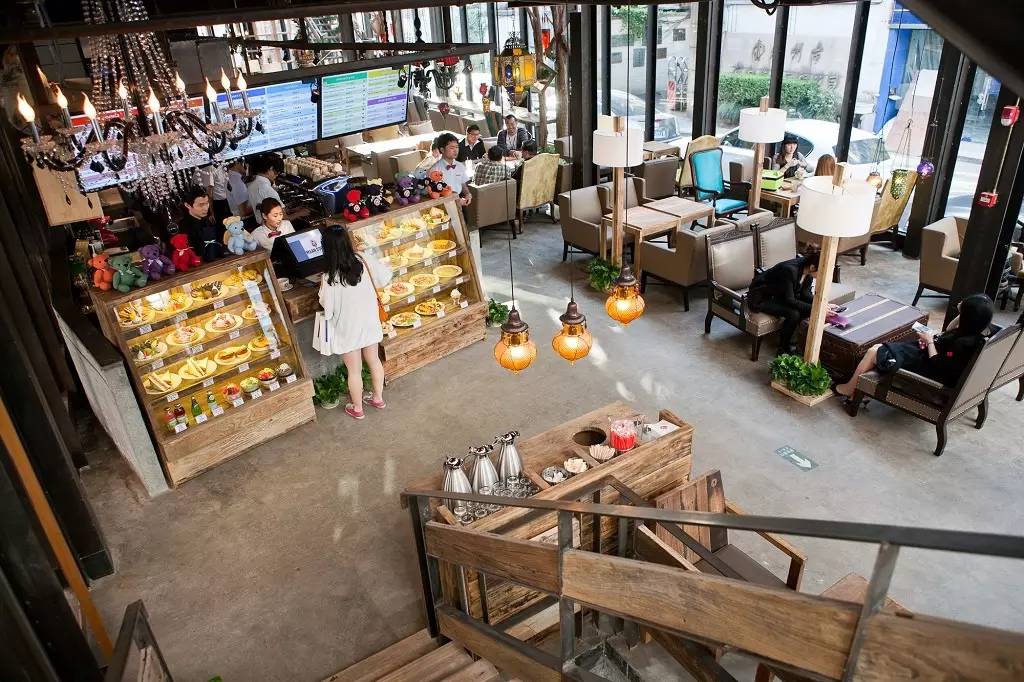
Take diffuse coffee as an example, bright and full interior space, leisure decoration style, the supply of some delicious snacks, and even the location of parks and residential areas, are all to meet the needs of target groups: a third space for rest and communication. According to the development trend of Chinese coffee market in the future, business coffee and leisure coffee are still the mainstream.
Business coffee play: location hand-to-hand combat, capital competition
The competition among business coffee is cruel, which is dominated by Starbucks, Costa and Pacific Coffee, which opens a market competition mode with enclosure as the core, coffee quality as well as corporate culture. Starbucks as a coffee giant, the brand is still absolutely strong, but in the face of equally strong capital competitors, it is inevitable to shed a little blood. As all the minds of Chinese consumers about coffee have been first occupied by Starbucks, the preferred way to compete with Costa and Pacific Coffee is to engage in pragmatic hand-to-hand combat on the location. People will gradually find that Costa is everywhere, it should be a big brand, the taste seems to be the same. As a result, the strategy is successful, and this way is right in the heart of the consumption stage when the coffee brand is greater than the taste in China. But this kind of practice needs financial support, how to open so many stores? The answer is realistic: have money and be self-willed. Behind the Pacific is China Resources, behind the Costa is Hualian, they have a lot of resources or they are shopping centers, which can be opened directly.
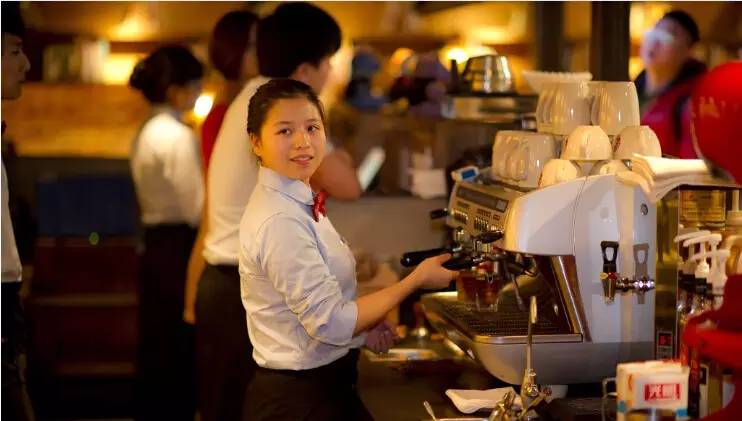
At the same time, there has been a heated debate about who makes coffee that really represents high quality. Pacific Coffee claims to make coffee in the spirit of craftsmen, while Costa stresses that it is an European brand with coffee cultural genes, and the coffee beans chosen are of better quality. Starbucks generously said that our biggest competitive weapon is the world's high-quality baking technology and coffee resources.
I have to admit that the competition between the big brands is really far away from the startups, whether it is Starbucks or Costa, the reason why it is really popular is the predictability of the quality of coffee and all the supporting environment. The author once did a survey, and the reason why the vast majority of customers choose to go to this kind of coffee shop is that the level of coffee is stable: the taste of each restaurant can be guaranteed within a certain range, whether you are on a business trip to Shanghai or in Beijing. Behind such "predictability of quality" is a strong capital flow (for unifying expensive coffee machines, store location and decoration), smooth management, supply chain, and efficient corporate culture.
Leisure Coffee: the Commercial value of digging the third Space
"Chinese people like to get together, whether it's chatting or eating, they all need an occasion, which is the third destination besides the company and home." This is the understanding of Xin Zi, founder of Man Coffee Exchange, relative to the concept of the third space, and the emergence and rise of leisure coffee shops also follow this core logic.
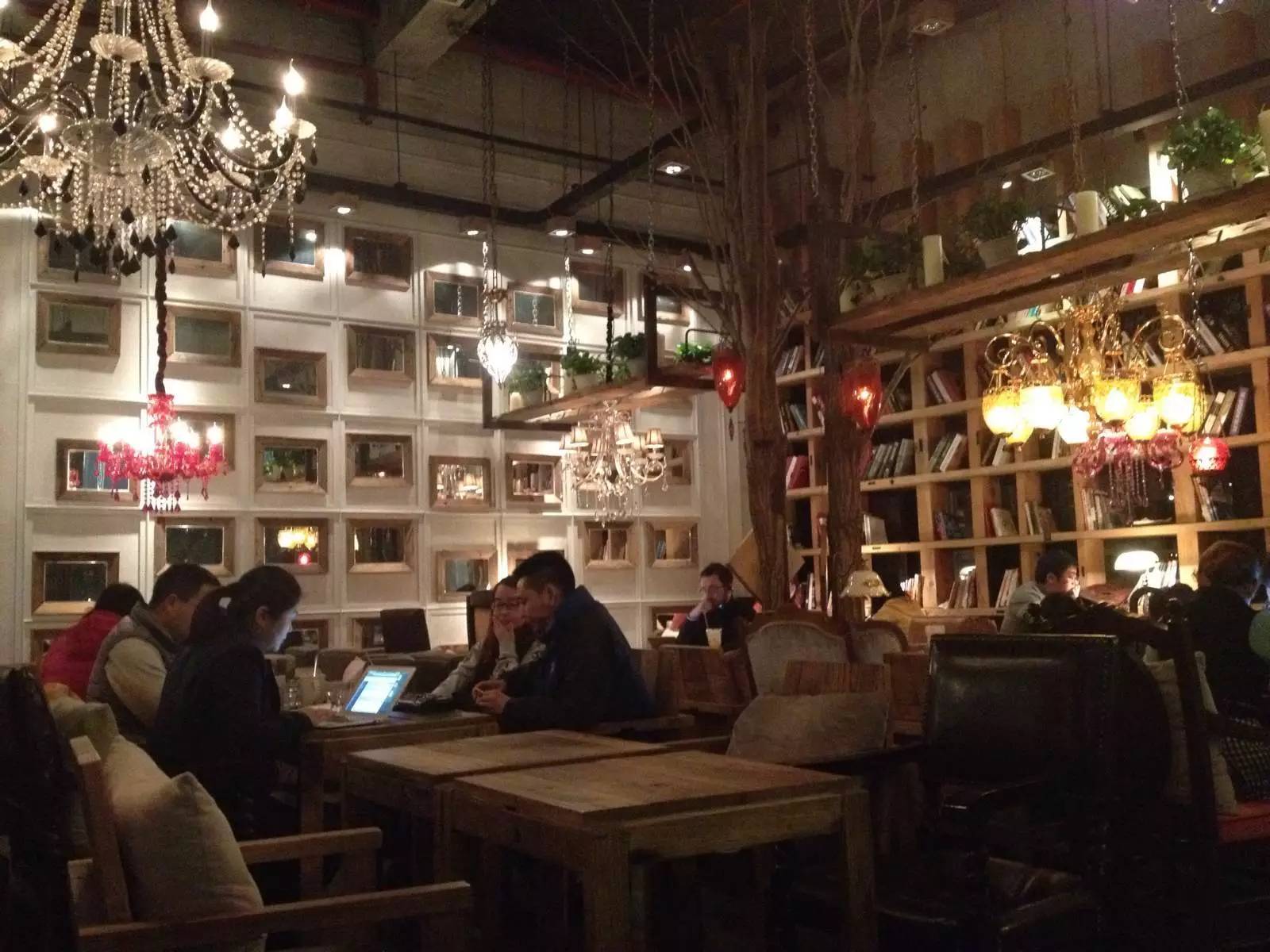
Over the years, social networks such as Douban and Weibo have been working to create social spaces on the Internet, while coffee shops have been committed to creating comfortable spaces for people to interact offline. At the same time, the rise of mobile office has also attracted a lot of busy people for the leisure coffee shop, which has gradually expanded from only assuming the function of the third space to providing work space.
Therefore, if "predictability of quality" is the business logic of big business coffee brands, then creating a space where people can sit down to work or talk comfortably is the core logic of leisure coffee.
Due to the difference of target groups, the location of leisure coffee shop is mainly concentrated in residential areas, universities and parks, where the rent is relatively low, which makes its development more possible.
But is it really easy to do business in leisure cafes? One report mentioned that coffee shop owners often complain about high costs and low returns, and consumers are not buying it. Coffee shop is definitely not an industry with low upfront costs, even if shopkeepers do not compete for those giants, all kinds of expensive professional equipment, including coffee machines, roasters, bean grinders, etc., coupled with higher requirements than other forms of store decoration, as well as the employment of professional coffee makers, are part of the high cost. If at this time there are consumers who do not buy your account, complain that coffee is expensive, and cannot drink the difference between Nestl é and freshly ground, then coffee shop shopkeepers can only break teeth and swallow blood.
Although the coffee industry has a huge space for development, the competition is fierce and the requirement for brand discrimination is very high. The new coffee brand can not compete with the giant "brand recognition", if it does not have its own characteristics, it will not become a pleasant entrepreneurial experience. The real "business characteristics" is based on the depth of understanding of the industry, so drinking coffee may be a relaxing thing, but as people in the industry, we should still be prepared to endure hardships.
Important Notice :
前街咖啡 FrontStreet Coffee has moved to new addredd:
FrontStreet Coffee Address: 315,Donghua East Road,GuangZhou
Tel:020 38364473
- Prev
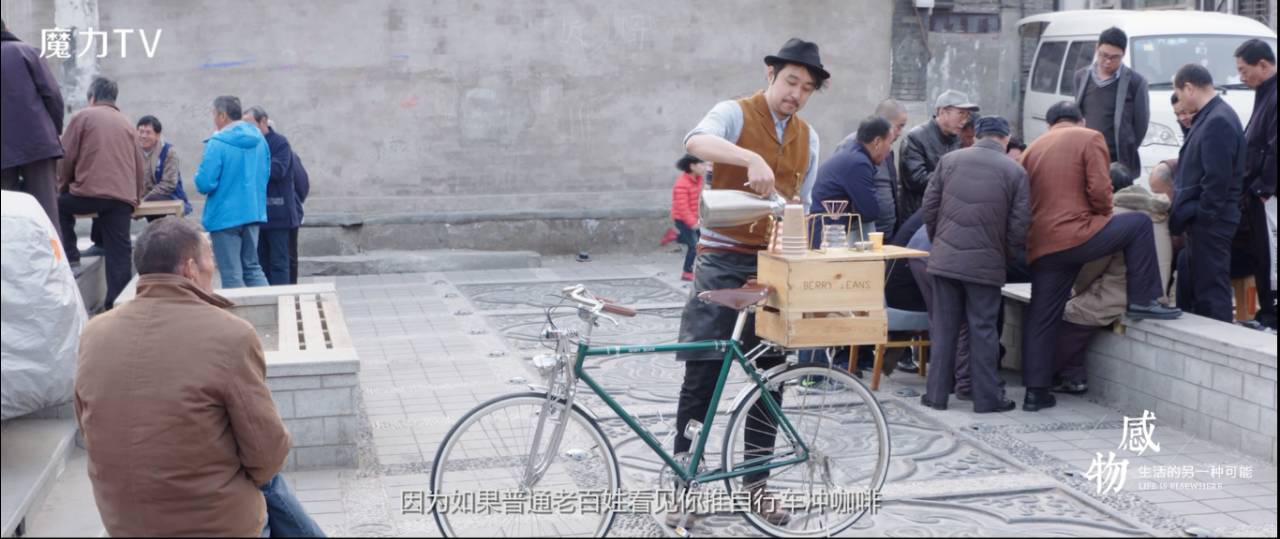
The story of a coffee man: the first person of Chinese cyclists to make coffee
Wei Hannight is the first person for Chinese cyclists to make coffee and the owner of an independent cafe. He hopes that everyone can drink a cup of coffee without burden, so he often rides his bike through the hutongs of Beijing to make coffee for the street people. No matter the uncles and aunts around him, or the security guard at the door, they all like to have a little chat with him. Full of curiosity
- Next
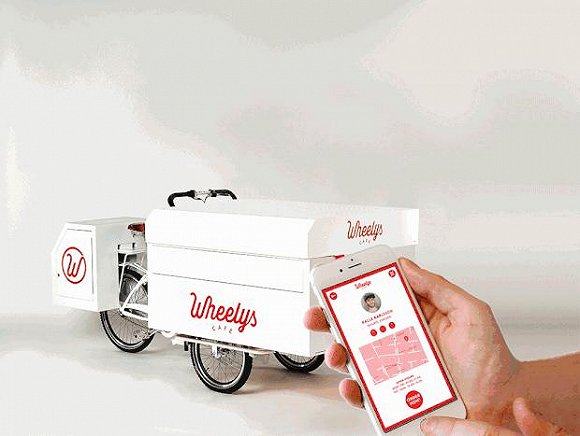
Can you join us with one car? The coffee truck that challenged Starbucks is going to "make trouble" again.
Nowadays, small red coffee cars can be seen in many cities. The Wheelys coffee car, which competes with Starbucks, has made new progress in the Chinese market. 1 "Ka Men" once reported that the coffee car brand Wheelys, there is a new trend worthy of attention to optimize and upgrade the city operator recruitment plan, the direct focus is to retain the original regional authorization cooperation.
Related
- What documents do you need to go through to open a coffee shop? coffee shop coffee shop certificate processing process
- How to purchase Coffee beans in small Cafe how to choose a suitable supplier for domestic Coffee supply Company
- How to drink Starbucks Fragrance White Coffee? how to make Australian White Coffee? what Italian coffee beans are recommended?
- The Story of Flora Coffee: the name of Flora Coffee Bean and the implication of the Flowers on Florna Coffee
- How much does a cup of coffee cost? How much is the profit of a cup of coffee? What is the profit of the coffee shop in a year?
- Yunnan small Coffee, known as "fragrant Coffee", introduces the characteristics of Alpine Arabica Coffee producing areas in Yunnan, China
- 2023 latest Starbucks full menu price list how much is a cup of Starbucks coffee what is better to drink the most popular hot and cold drinks recommended
- Starbucks different kinds of Coffee Price list Starbucks menu 2023 Top Ten Best drinks in Starbucks
- Starbucks Spring praise Comprehensive matching Coffee Bean theme Story Packaging implication and taste description
- The cost of a cup of coffee latte American coffee cost price and selling price

